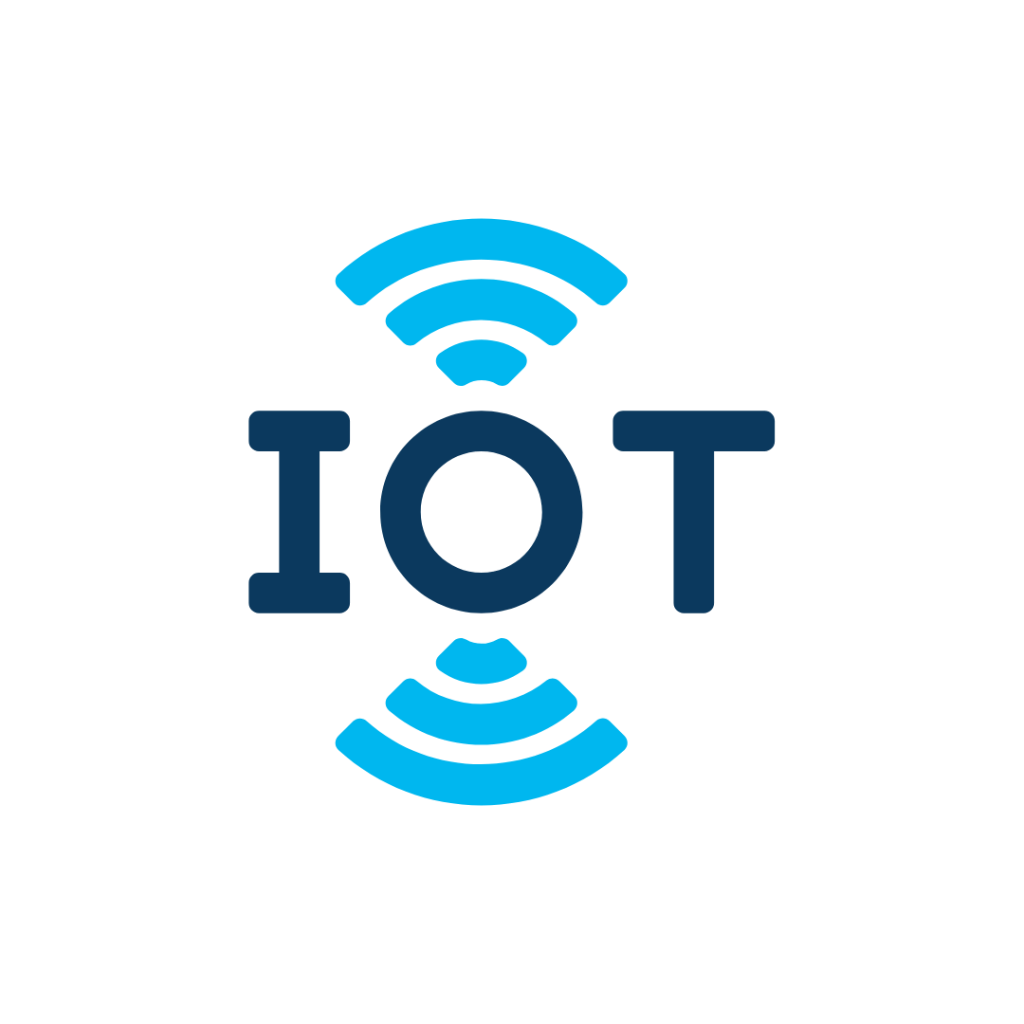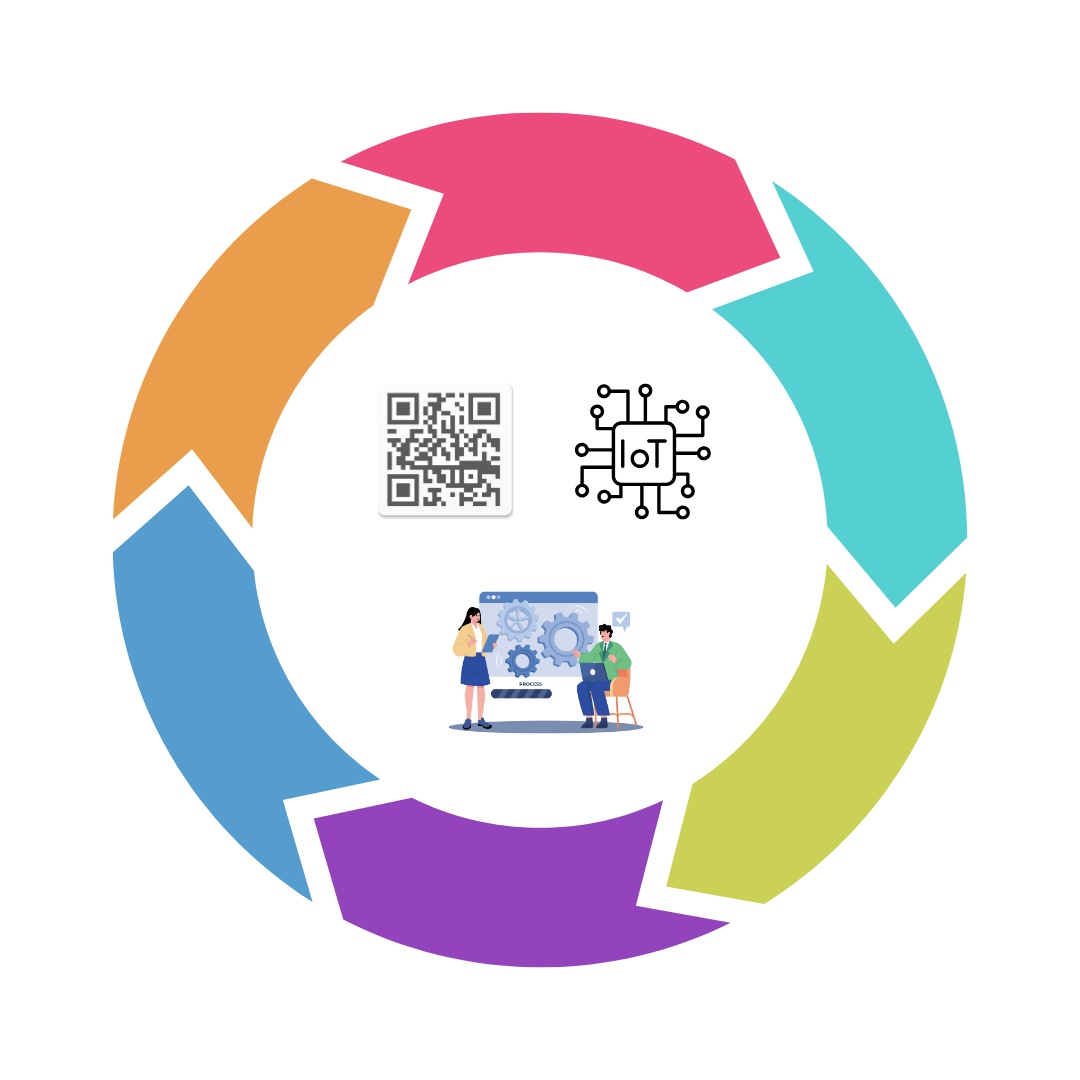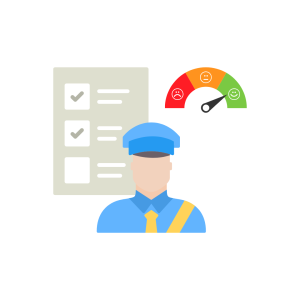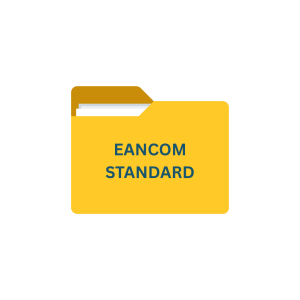Introduction
The retail and healthcare industries are undergoing a profound technological transformation. At the forefront of this revolution are 2D barcodes and the Internet of Things (IoT), technologies that are reshaping how businesses operate, interact with consumers, and manage their supply chains.
2D barcodes represent a significant leap forward from their one-dimensional predecessors. These advanced data matrices can store substantially more information in a smaller space, opening a world of possibilities for product tracking, personalized shopping experiences, patient safety, improving medication management, inventory management, and consumer engagement. When combining with the Internet of Things – a network of interconnected devices capable of collecting and exchanging data – the potential applications become truly transformative.
History of Barcode Technology
The Birth of Barcodes
The concept of barcodes first emerged in the 1940s when Bernard Silver, a graduate student at Drexel Institute of Technology in Philadelphia, overheard a local food chain president asking about the possibility of automatically reading product information during checkout. This sparked the idea that would eventually lead to the development of the barcode.
In 1949, Silver and his friend Norman Joseph Woodland began working on a system to automatically read product information. Their first attempt involved using ultraviolet ink, but this proved impractical. Woodland, inspired by Morse code, then came up with the idea of using thin and thick lines to represent information.
The First Barcode Patent
In 1952, Woodland and Silver were granted a patent for their “Classifying Apparatus and Method,” which described both linear and circular barcode patterns. However, the technology to read these codes efficiently didn’t exist at the time, limiting their immediate practical application.
The Rise of UPC
The real breakthrough came in the early 1970s with the development of the Universal Product Code (UPC). In 1973, after a rigorous selection process, the grocery industry adopted the UPC as its standard barcode symbology. On June 26, 1974, at a Marsh supermarket in Troy, Ohio, the first product with a UPC barcode – a pack of Wrigley’s chewing gum – was scanned at a checkout.
Global Adoption and Standardization
Following the success of UPC in the United States, similar systems were developed in other countries. In 1977, the European Article Numbering (EAN) system was introduced, which was compatible with UPC but allowed for country-specific coding.
As barcodes gained popularity, the need for global standards became apparent. In 1989, the Uniform Code Council (UCC) and EAN International began collaborating, leading to the formation of GS1 in 2005, a global organization dedicated to the development and implementation of global standards for supply chain management.
The Advent of 2D Barcodes
While linear barcodes revolutionized retail and inventory management, they had limitations in terms of data capacity and the types of information they could encode. This led to the development of two-dimensional barcodes in the late 1980s and early 1990s.
The first 2D barcode, Code 49, was introduced by Intermec Corporation in 1987. However, it was the development of the QR (Quick Response) code by Denso Wave in 1994 that truly popularized 2D barcodes. QR codes could store significantly more information than linear barcodes and could be read quickly, making them ideal for a wide range of applications.
Modern Developments
Today, we see a variety of 2D barcodes in use, including Data Matrix, PDF417, and Aztec codes, each with its own strengths and applications. The advent of smartphones with built-in cameras capable of reading these codes has led to widespread adoption in consumer-facing applications, from marketing and payments to ticketing and product information.
The evolution of barcode technology continues, with ongoing developments in areas such as color barcodes, invisible barcodes, and even DNA barcodes for biological applications.
What are 2D Barcodes?

Two-dimensional barcodes, commonly known as 2D barcodes, represent a significant advancement in data encoding and storage technology. Unlike their one-dimensional predecessors, 2D barcodes can store information both horizontally and vertically, allowing for a much higher data density in a smaller space.
Let us explore the
- Structure,
- Capabilities,
- and the various types of 2D barcodes in use today.
Structure and Composition
A 2D barcode is essentially a matrix of black and white squares or other geometric patterns. These patterns encode data in both the X and Y axes, hence the term “two-dimensional.” The structure typically consists of:
- Finder Pattern: A unique arrangement of elements that helps scanners locate and orient the barcode.
- Alignment Pattern: Additional markers that help correct for distortion when the code is printed on a curved surface or viewed at an angle.
- Timing Pattern: A sequence of elements that help determine the size of the data matrix.
- Data and Error Correction Keys: The actual encoded information along with redundancy to ensure accurate reading even if parts of the code are damaged.
Data Capacity and Versatility
One of the most significant advantages of 2D barcodes is their ability to store large amounts of data in a compact space. While a standard UPC barcode can typically hold about 20-25 characters, a 2D barcode like a QR code can store up to 7,089 numeric characters or 4,296 alphanumeric characters.
This increased capacity allows 2D barcodes to encode a wide variety of information types, including:
- Website URLs
- Plain text
- Contact information (vCards)
- Email addresses
- Geographic coordinates
- Wi-Fi network credentials
- And much more
Types of 2D Barcodes
Several types of 2D barcodes have been developed, each with its own strengths and common applications:
- QR Code: Perhaps the most recognizable 2D barcode, QR codes are widely used in consumer applications due to their high data capacity and fast readability.
- Data Matrix: Often used in industrial settings, Data Matrix codes can encode a lot of information in a very small space and are readable even when printed at a small size or etched directly onto products.
- PDF417: This stacked linear barcode is commonly used on identification cards and shipping labels due to its high data capacity and rectangular shape.
- Aztec Code: Named for its resemblance to an Aztec pyramid, this code is often used in the transportation industry, particularly on electronic tickets.
- MaxiCode: Developed by UPS, this circular barcode is optimized for high-speed scanning in the logistics industry.
Reading and Scanning
Unlike 1D barcodes which typically require specialized laser scanners, 2D barcodes can be read by image-based scanners. This includes smartphone cameras, making 2D barcodes particularly useful for consumer-facing applications.
The reading process involves:
- Capturing an image of the barcode
- Identifying the barcode within the image
- Analyzing the patterns to extract the encoded data
- Applying error correction if necessary
- Decoding the data into its original form
What is IoT?
The Internet of Things, commonly abbreviated as IoT, represents a paradigm shift in how we interact with the world around us. It refers to the vast network of physical devices, vehicles, home appliances, and other items embedded with electronics, software, sensors, and network connectivity, which enables these objects to collect and exchange data.

How 2D Barcodes and IoT Work Together
The convergence of two-dimensional barcodes and the Internet of Things (IoT) represents a powerful synergy that is transforming various industries, particularly retail and healthcare. This integration creates a seamless bridge between the physical and digital worlds, enabling unprecedented levels of data collection, analysis, and automation. This section explores how these technologies complement each other and the innovative applications that arise from their combination.
The Synergy of 2D Barcodes and IoT
2D barcodes serve as a gateway to the digital realm, providing a quick and efficient means of accessing or inputting data into IoT systems. Meanwhile, IoT provides the network infrastructure and data processing capabilities that give context and actionability to the information encoded in 2D barcodes. Here’s how they work together:
- Data Entry Point: 2D barcodes act as a physical trigger for IoT systems. When scanned, they can initiate a range of actions within the IoT network.
- Identification and Authentication: 2D barcodes can uniquely identify objects, locations, or even people, allowing IoT systems to track and manage resources more effectively.
- Data Enrichment: IoT systems can supplement the static data in a 2D barcode with real-time, dynamic information from connected sensors and databases.
- Actionable Insights: The combination of barcode data and IoT analytics can generate valuable insights and trigger automated responses.
Difference Between 1D and 2D Barcodes
1D, or one-dimensional, barcodes are linear codes commonly found on products for identification purposes. At checkout, they use lines and spaces to look up prices and encoded data. This data includes information about the item’s origin, type, and location in the supply chain.
When you scan a 1D barcode, there must be a matching item in the price database for it to work. 2D barcodes, like QR Codes, can store more than just letters and numbers. They can also hold a URL to enable access to things like pictures, website links, audio, and other types of computer data
Aspect | 1D Barcode | 2D Barcode |
|---|---|---|
Structure & Appearance | Consist of parallel lines of varying widths and spaces | Composed of patterns of squares, dots, hexagons, or other geometric shapes. |
| Data Capacity | Limited data capacity, typically up to 20-25 characters | Significantly higher data capacity, up to several thousand characters. |
| Information Types | Primarily used for numeric data (e.g., product identification numbers) | Can encode a wide variety of data types including:
|
| Scanning Technology | Typically read by laser scanners. | Require image-based scanners or cameras. |
| Error Correction | Limited or no built-in error correction. More susceptible to damage or poor printing quality. | Advanced error correction capabilities. Can often be read even if partially damaged or obscured. |
| Size and Space Efficiency | Requires more space to encode the same amount of data compared to 2D barcodes. | More compact, can store more data in less space. |
| Customization & Branding | Limited options for customization. Generally appear as black bars on a white background. | Offer more flexibility in design and customization. Can incorporate logos or custom designs (especially QR codes). |
| Common Applications |
|
|
| Readability by Humans | Often include human-readable numbers below the barcode. | Generally not human-readable. |
| Integration With IoT and Smart Devices | Limited integration capabilities with modern IoT systems | Easily integrated with smartphones and IoT devices |
| Cost Considerations |
|
|
How to Generate and Use 2D Barcodes
1. Choose the Right Type of 2D Barcode
- QR Code: For general use, especially consumer-facing applications.
- Data Matrix: For industrial applications, small items, or when space is limited.
- PDF417: For applications requiring high data capacity in a rectangular format.
- Aztec Code: For applications where readability under poor conditions is crucial.
2. Select a Barcode Generator
- Online Tools: Numerous free online generators are available for basic needs.
- Software Solutions: For professional use, consider dedicated barcode generation software.
- API Integration: For high-volume or automated generation, use APIs provided by barcode service providers.
3. Determine the Content
- For URLs: Ensure the link is correct and consider using a URL shortener.
- For Product Information: Include essential details like product ID, batch number, and expiration date.
- For Contact Information: Use standardized formats like vCard.
4. Configure Error Correction
- Higher error correction levels increase readability but also increase code size.
- The balance between reliability and size based on the intended use environment.
5. Test the Barcode
- Scan the generated barcode with multiple devices to ensure readability.
- Verify that the encoded information is correct and complete.
Implementing 2D Barcodes
1. Size Considerations
- Ensure the barcode is large enough to be easily scanned.
- General rule: Minimum size should be 2 x 2 cm for most applications.
- Review GS1 2D barcode sizes sheet
2. Placement
- Choose a location that is easily accessible for scanning.
- Avoid placing barcodes on curved surfaces or areas prone to damage.
3. Printing Quality
- Use high-quality printers to ensure clear, crisp lines.
- For long-term use, consider durable materials resistant to fading and wear.
4. Color and Contrast
- Maintain high contrast between the barcode and background.
- While black on white is standard, other high-contrast color combinations can work.
5. Quiet Zone
- Leave a blank margin around the barcode to aid in scanning.
- Typically, a margin equal to 4 times the width of the smallest element in the code.
6. Integration with Existing Systems
- Ensure your inventory management or point-of-sale systems can read and process the 2D barcode data.
- Train staff on new scanning procedures if necessary.
Benefits of Using 2D Barcodes
- 2D barcodes can be scanned in any direction, even if damaged or torn, reducing transaction delays and disruption at checkout, in a hospital or at the point of patient care. Built-in error correction and a higher fault tolerance helps ensure important supply chain data can still be retrieved, even when partially damaged.
- The smaller barcode size can be stamped directly onto different surfaces, including metal-ideal for small medical devices and equipment.
- Less barcode space required for packing results in more space for marketing and product information.
- If a recalled product reaches checkout of the patient care level, the 2D barcode scan could alert that the item must not be sold or used, preventing the use or sale of potentially harmful products.
- 2D barcodes increase visibility to data needed for sustainability initiatives, including sourcing information, packaging details, recycling information and more.
- Visibility to expiration, best-before and sell-by dates enables retailers, healthcare providers and other supply chain stakeholders to sell or promote soon-to-expire products.
- More effective inventory management and stock rotation helps reduce financial loss, with fewer expired products needing to be disposed of.
- For small products, the shift to a much smaller barcode means a reduction in unnecessary oversized packaging, currently needed to meet regulatory labelling requirements. This will significantly contribute to a reduction in packaging waste.
List of Industries that Use & Benefit From 2D Barcodes
As the supply chain evolves and consumers demand more information, industries are adopting 2D barcode technology. They are looking to seamlessly capture and share more robust data across the supply chain while increasing consumer engagement and supply chain effectiveness.
Retail
- Product Packaging: Include detailed product information, usage instructions, and links to online resources.
- Shelf Labels: Provide pricing, stock information, and links to reviews or additional product details.
- Marketing Materials: Link to promotional videos, social media pages, or special offers.
Healthcare
- Patient Wristbands: Encode patient information for quick and accurate identification.
- Medication Labels: Include drug information, dosage instructions, and expiration dates.
- Equipment Tracking: Manage inventory and maintenance schedules for medical devices.
Supply Chain Management
- Shipment Tracking: Encode shipping details, handling instructions, and destination information.
- Inventory Control: Track stock levels, locations, and movement of goods.
Customer Engagement
- Business Cards: Link to digital contact information or professional profiles.
- Event Tickets: Encode ticket information for easy validation and tracking.
- Restaurant Menus: Provide nutritional information or links to online ordering systems.
How EDI and GDSN Utilize 2D Barcodes to Streamline the Supply Chain
EDI enables businesses to exchange data electronically, reducing manual errors and increasing efficiency. 2D barcodes enhance EDI by:
- Encoding product details, batch numbers, and expiration dates for seamless data exchange.
- Reducing the risk of miscommunication in automated order processing.
- Improving supply chain visibility with real-time tracking and verification.
GDSN ensures that companies use standardized and accurate product information across supply chains. 2D barcodes enhance GDSN by:
- Storing globally standardized product data for easy scanning and retrieval.
- Enabling seamless product authentication and regulatory compliance.
- Enhancing consumer trust with transparent and consistent product information.
Conclusion
The future of retail and healthcare will be driven by digital transformation, and 2D barcodes and IoT will play a pivotal role. These technologies enable businesses to enhance traceability, security, and automation, ultimately leading to improved efficiency and consumer satisfaction. As adoption grows, organizations that leverage these technologies will stay ahead in the evolving landscape.
Commport B2B Integration Solutions
Frequently Asked Questions
2D barcodes store more data in a compact space and offer better security, while 1D barcodes have limited capacity.
As technology advances, 2D barcodes are becoming the preferred choice due to their versatility and higher data capacity.
Retail, healthcare, logistics, manufacturing, and government sectors use 2D barcodes for tracking, security, and efficiency.
Most modern smartphones and scanners can read QR codes and GS1 DataMatrix codes with the right software.
No, QR codes are used for consumer engagement, while GS1 DataMatrix is standardized for supply chain and healthcare applications.





